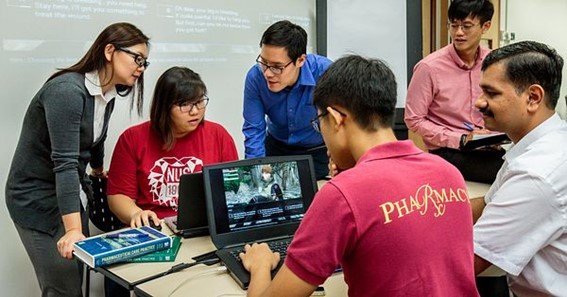Are you curious to know what is blended process? You have come to the right place as I am going to tell you everything about blended process in a very simple explanation. Without further discussion let’s begin to know what is blended process?
The blended process, also known as blended learning, is an innovative approach to education that combines online and face-to-face instruction. In this blog, we will explore what the blended process is, its benefits, and how it can be implemented.
What Is Blended Process?
The blended process is a hybrid approach to education that combines traditional face-to-face instruction with online learning. It involves a mix of in-person classes, virtual lectures, and online assignments. The aim of the blended process is to provide a flexible learning experience that accommodates different learning styles and schedules.
Benefits Of The Blended Process
The blended process offers several benefits to students, including:
- Personalized Learning: The blended process allows students to learn at their own pace, giving them control over their education. Students can choose when and where they want to study, which can help them learn better.
- Flexibility: The blended process provides students with flexibility, allowing them to balance work, family, and other commitments while still pursuing their education.
- Improved Student Outcomes: Studies have shown that the blended process can improve student outcomes. It can increase engagement, retention, and student satisfaction, leading to better academic performance.
- Cost-Effective: The blended process can be cost-effective as it reduces the need for physical classroom space and materials.
Implementing The Blended Process
Implementing the blended process requires careful planning and preparation. The following steps can help to ensure a successful implementation:
- Identify Learning Objectives: Define the learning objectives and outcomes for the course or program.
- Determine Delivery Methods: Determine the best delivery methods for each learning objective. Consider which objectives can be taught online and which require in-person instruction.
- Design Learning Activities: Design learning activities that are engaging and interactive. Use a variety of online and in-person activities to accommodate different learning styles.
- Create Online Content: Create online content, including lectures, videos, and interactive activities. Ensure that the content is accessible and user-friendly.
- Choose a Learning Management System (LMS): Choose an LMS that can support the blended process. The LMS should allow for easy course management, content delivery, and assessment.
- Train Faculty and Staff: Train faculty and staff on the blended process and the use of the LMS.
Conclusion
In conclusion, the blended process is a hybrid approach to education that combines online and face-to-face instruction. It offers several benefits, including personalized learning, flexibility, improved student outcomes, and cost-effectiveness. Implementing the blended process requires careful planning and preparation, including identifying learning objectives, designing learning activities, and choosing an LMS. The blended process is a promising approach to education that can help to accommodate the diverse needs of students and enhance their learning experiences.
On GetDailyBuzz you will get to know beneficial information which required in your daily life.
FAQ
What Is A Blended Process In The Company?
As mentioned earlier blended process is the mixture of both voice and nonvoice processes wherein an agent has to resolve the customer query over the phone and answer via email as well. Mostly in the blended process voice call percentage is very and you need to attend to the customer over chats or emails only.
What Is A Blended Process In Customer Service?
A blended contact center refers to a process where customer representatives may take both incoming and outgoing calls. It is different from an inbound and outbound call center. An inbound call center is responsible for just receiving calls. Whereas the outbound call center is responsible for just making calls.
What Does Blended Mean In The Job?
A blended workforce is when an organization uses employees with different types of work arrangements to meet its needs. The different work arrangements include: Part-time. Full time. Temporary.
What Is The Process Of Blending?
Blending is commonly described as the process of mixing two or more chemicals together without producing a chemical reaction or creating more industrial chemicals as a result. Many consumer and cosmetic products containing industrial chemicals are mixtures formed by blending.
What Is A Blended Process In BPO?
A blended BPO job is where you use voice along with other communication techniques in order to communicate with your client or customer, probably email or chat.
What Is The Full Form Of BPO?
The full form of BPO is Business Process Outsourcing. BPO is an organization contract with a 3rd party or an independent service provider with regard to its workflow activities and obligations. It is a cost-saving process that allows enterprises to outsource their non-core functions.
I Have Covered All The Following Queries And Topics In The Above Article
What Is Blended Process In Bpo
What Is Blended Process In Bpo Means
What Is Blended Process Job
What Is Blended Process In Customer Service
What Is Blended Process Jobs
What Is Blended Process?
What Is A Blended Process
What Is Blended Process In Job
What Is Blended Process In Bpo Means
Blended Process Salary
What Is Blended Process In Hindi
What Is Blended Process In Tech Mahindra
Blended Process Job Description
Blended Process In Call Center
Non Voice Blended Meaning
What Is Blended Process
What is the blended process in BPO
What is blended process?

